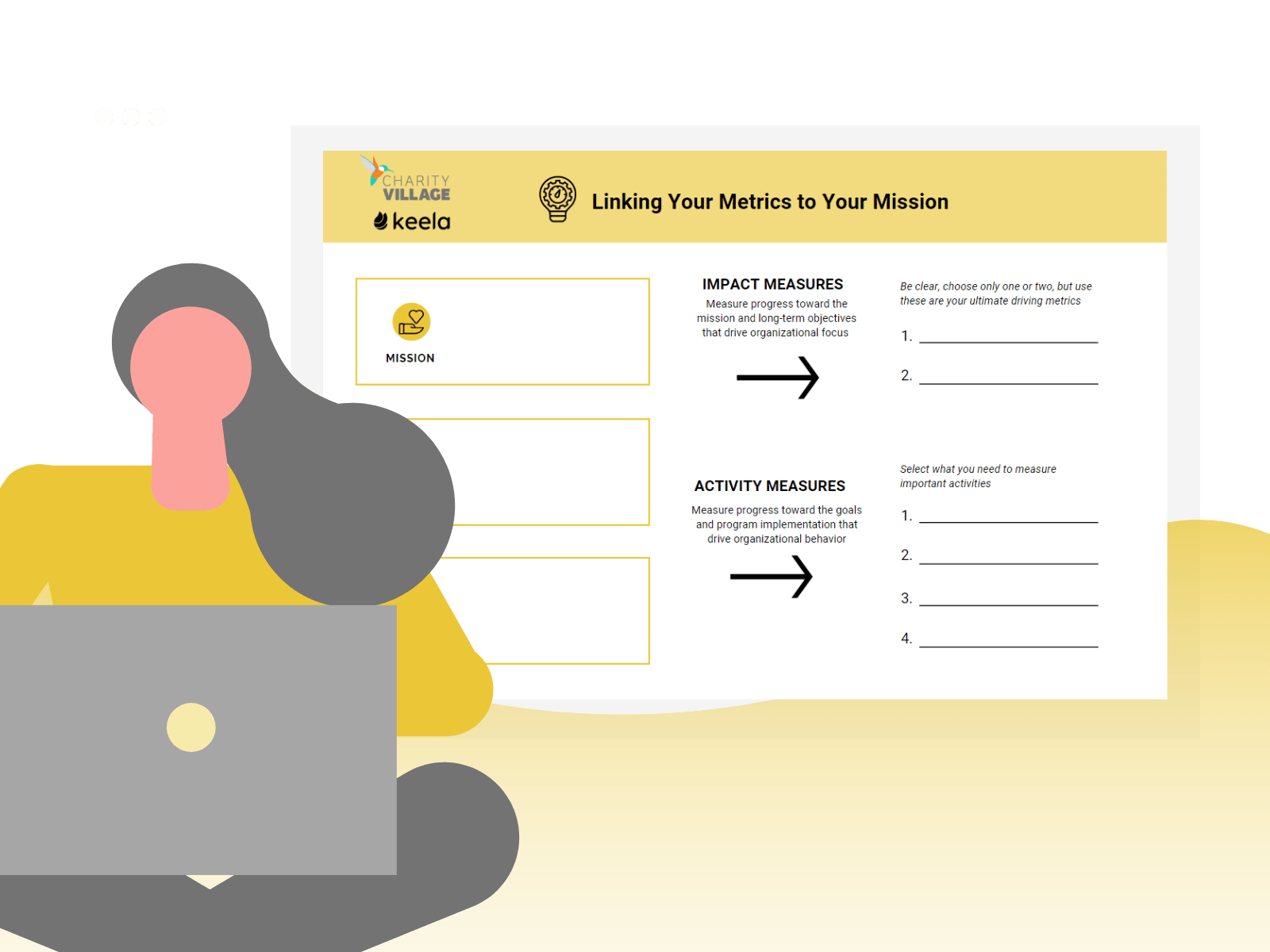The Ultimate Course on Nonprofit KPIs


Best suited for beginners and intermediate learners.
In this course, you will learn how to define, determine, and track your KPIs. You will be provided with a host of KPI examples, best practices, and guidance on how to determine which KPIs are right for your organization.
Introduction to the concepts
If working with KPIs gives you scary flashbacks to grade 10 math class, let me put your mind at ease. KPIs are numbers, and yes some simple math may be required. But for many, working with KPIs is the first time numbers start to become powerful allies, rather than the intimidators they were in high school.
KPIs are measurements of things you are working hard on every day. If used properly they will show you exactly what is working and what isn’t. They can be your guideposts and once you have them, you may wonder how you ever made decisions without them.
A KPI, which stands for Key Performance Indicator, is a measure of something you are working to improve.
For most nonprofits, there are three categories of KPIs:
1. KPIs the Board wants to track: perhaps its average gift size, donor lifetime value or something obscure and unusual, these are the metrics the board asks you to report on each quarter so it’s important you understand how to measure them and how your actions can affect them.
2. KPIs used as Benchmarks in your industry: These are the big KPIs that usually define the most important elements of running a successful nonprofit. Some examples are Donor Retention Rate, Donation Growth Rate, and Open Rate if you are using email as your main source of communication.
3. Management KPIs: These are simple KPIs you determine are important for you and your team to understand the impact your initiatives are having day-to-day or week-over-week. These are usually leading indicators while board and benchmark KPIs often lagging indicators. (more on this later I promise)
Take some time to collect all of the KPIs you think you will want to track and ensure you have a healthy mix of some from each category.
If possible aim to stay under 20 KPIs to start, you can always add more as you go. You will need to get intimately familiar with each of these KPIs to understand what level of volatility is normal and how trends will look over time. You will begin to see patterns and understand which actions will affect which KPIs and where a change in one KPI may lead to a change in another.
The reality is everything is connected, and as you become familiar with your KPIs you will see the connections, and that is truly powerful.
A list of common nonprofit KPIs chosen by one organization
For this example, we have chosen a fundraising-focused organization whose goal is to increase the number of recurring donations and grow using an online fundraising strategy.
Here are the 8 KPIs they have chosen to focus on:
Donation Growth Rate:
This is the annual overall rate of growth in donations tracks donation revenue year over year. This shows you how effective you are at growing donations annually and is an important consideration for your board of directors.
Fundraising ROI:
This metric is incredibly important as it shows you if your fundraising efforts are working. You can easily check whether your fundraising efforts are bringing in the return you need by calculating how much more you brought in, then spent, on the fundraising efforts used to generate that revenue.
Average Gift Size:
The average size of a gift (donation) from your donors.
Donor Growth Rate:
The rate at which the number of donors you have grows per period.
Donor Retention Rate:
The percentage of donors who give to your organization one year and then give again the following year. Considering the high cost of acquiring new donors, it’s important to make sure you aren’t losing anyone.
Recurring Gift Percentage:
Track how many of your donors are giving repeatedly and predictably.
Online Gift Percentage:
Online fundraising is way easier and cheaper than some other forms. This is an important KPI to track whether your campaigns are working.
Donor Conversion Rate:
This measures the number of donors that take the first step (maybe that means visiting your donation page or attending your events) that then move on to donate.
Leading and lagging indicators
The next concept I want to introduce is the idea of leading and lagging indicators. An indicator is simply another word for KPI. A leading indicator is something that measures your efforts toward a final goal while a lagging indicator measures that final goal. There is plenty of grey areas here on what is an effort and what is a final goal but if you grasp the concept you will be able to see how recognizing a KPI as a leading indicator will allow you to see how your actions are performing long before you are able to report the result.
A lagging indicator is a measurement of whether you did succeed.
A leading indicator suggests whether you are going to succeed. When watched closely, leading indicators allow you to take action today to prevent a less favorable result tomorrow.
Let me give you an example. We all know that donor engagement is a predictor of donation amounts received. The more engaged and connected a donor feels the more he will give, right? So following that assumption it would make sense that we could measure donor engagement in order to predict donation growth in the following quarter.
So in this example, a leading indicator would be a measurement of donor engagement and a lagging indicator would be total donations, or donation growth rate. How you choose to measure donor engagement is up to you but we will provide you with many options and benchmark examples in this course.
If the answer is fundraising then every action you take before you receive a dollar of funds is measured as a leading indicator. Every measurement of funds received (whether that’s total dollars, growth rate, or average gift size) is then a lagging indicator.
Wait a minute! We are a nonprofit organization, our single most important goal isn’t fundraising! It’s the impact we can make on our cause with the funds we raise. Well, thank goodness you came to that conclusion because that may feel like a subtlety to some, and I can tell you in big business this higher goal is often forgotten entirely. This realization is the difference between a great nonprofit and one that struggles.
Your lagging indicator should always be the impact you can make. How you measure this quantitatively, efficiently, and reliably is your next big challenge. Measuring your impact should always be your priority and every other metric becomes a leading indicator that guides you to this end goal.
See I told you these numbers would become your ally.


Your lagging indicator should always be the impact you can make.
How you measure this quantitatively, efficiently, and reliably is your next big challenge.
How to measure impact
Measuring real impact has always been a challenge for nonprofits and it’s usually because their mission is vague and high-level. How can you measure something you can’t clearly define?
Take the example of The Nature Conservancy, a well-known and successful US-based nonprofit with the following mission: To preserve the diversity of plants and animals by protecting the habitats of rare species around the world.
How can you measure this? Read this article by McKinsey & Company to see how The Nature Conservancy overcomes this challenge and grows to over 780 million in revenue and 1.1 million members. The next section of this course will use content from this article so please take 10 min to read through it all.
Activity 1: Test your understanding
Activity 2: Build a tool for your organization
Using the framework in Exhibit 2, develop the following framework for your organization:
- Begin by defining your Mission and Vision, then consider the goals you set and the strategies you employ to get you there.
- Finally, describe the day-to-day tactics and activities that you do to move your mission forward. From each of these, you can pull a few key metrics that you can use to develop your toolkit.
This KPIs Course is brought to you by Keela and CharityVillage.









